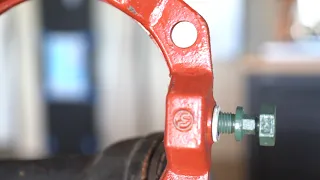Most people have a plunger sitting somewhere in a closet or under the bathroom sink. It’s one of those household items you buy “just in case,” then hope never to need. But when trouble strikes—especially if you’ve just flushed and the water is rising alarmingly—you find yourself reaching for that plunger. The problem is, many folks don’t realize there’s more than one type, and they’re not all equally effective. Furthermore, mastering the right technique matters. This post will walk you through the differences between plungers, how to use them properly, and how a bit of know-how can spare you from an overflowing mess.
Types of Plungers
Before you can tackle a clogged toilet, you need to identify which plunger belongs in your toolbox. Though they may appear similar at a glance, each is best suited for specific fixtures.
1. Flat Cup Plunger
This is likely the simplest and cheapest option you’ll see in a store. It features a rubber cup shaped like a small bowl with a flat rim. If you invert it, it looks like a half-sphere. A flat cup plunger is well-suited for sinks or other fixtures with a relatively flat surface—like a bathtub or shower floor. You press the flat rim against the drain opening, creating a seal. However, flat cup plungers aren’t great for toilets because the toilet bowl outlet is curved and recessed. Trying to form a tight seal can be difficult, leading to water splashing or zero pressure on the clog.
2. Flange or Toilet Plunger
Designed specifically for toilets, a flange plunger has an extended rubber flap or funnel that protrudes from the cup. This extension nestles into the toilet drain’s angled shape, forming a more secure seal. The rest of the cup can then press around the porcelain, keeping water from spewing out. Many flange plungers have flexible edges or a bendable funnel so it can accommodate varying bowl contours.
If you only keep one plunger in the house, get a flange model for the toilet. It can still handle sinks in a pinch if you fold the flange part inward, though it’s slightly less convenient than a flat plunger for those surfaces.
3. Specialized Variations
Some modern plungers feature accordion-style bodies. They use an extendable plastic chamber that compresses, forcing water and air downward. While these can deliver significant plunging power, they aren’t always flexible at the tip, making it harder to maintain a good seal if the toilet bowl shape is irregular. Others come with an integrated drip tray or handle design for easier storage. As long as there’s a flange or snug-fitting portion at the end, they can be quite effective for toilets.
Why the Right Plunger Matters
The main goal when plunging a toilet is to create strong, directed pressure that pushes the blockage through the trapway. If your plunger can’t maintain a seal, you’ll mostly churn air and water around inside the bowl, accomplishing nothing.
-
Better Seal = More Force: A dedicated toilet plunger forms a seal deep into the bowl outlet, so each downward thrust focuses water directly into the clog.
-
Less Mess: A secure fit means minimal splashing or backflow.
-
Less Effort: A poorly fitting plunger can wear you out—pumping the handle vigorously without moving the obstruction. A correct fit speeds up the process.
How to Properly Use a Toilet Plunger
Having a flange plunger is half the battle. Here’s the step-by-step process to maximize your chances of success.
1. Evaluate the Water Level
If the bowl is filled to the rim and threatens to overflow, reach behind the toilet and turn off the angle stop (the small shutoff valve). That prevents additional water from the tank if someone accidentally flushes. If the water level is only moderately high, you might be safe to plunge without spillage. Just keep an eye on it.
In an emergency situation—like at a friend’s house—removing the tank lid and pushing down the flapper can also halt more water from entering the bowl, buying you time to shut off the supply.
2. Warm Up the Plunger (Optional)
This step might sound strange, but if the plunger’s rubber is stiff or cold, running it under warm water for a few seconds can soften it. That makes the material more pliable, helping achieve a tighter seal.
3. Insert and Position
Angle the plunger so the flange tucks fully into the toilet outlet. You want the entire rubber lip snug around the curvature of the drain, with minimal gaps for air to escape. The rest of the plunger’s cup should also contact the bowl.
4. Add Water if Needed
Plunging works best when the cup is submerged. If the bowl water is very low, consider pouring some water in from a bucket so the plunger can stay covered. It’s the water, more than air, that transmits force downward effectively.
5. Start with a Gentle Push
The first plunge shouldn’t be aggressive. You’re mostly trying to expel trapped air so water can fill the plunger cup. Once you’ve eliminated air pockets, each subsequent push has a better chance of dislodging the clog.
6. Use Steady, Rhythmic Thrusts
Press down firmly, then pull back slightly without breaking the seal. You want a cycle of compression and suction. Some blockages need a few pushes. Others might require 10 or 15 cycles. Keep going until you see the water start to drain away.
7. Test the Flush
Once you suspect the clog has cleared—usually indicated by a noticeable gurgle or a sudden drop in water—lift the plunger carefully. Turn on the angle stop if you had it off, and do a test flush. If the water flows smoothly, you’re done. If it’s still slow or starts to rise, repeat plunging.
What If the Plunger Fails?
Sometimes, you’ve done everything correctly but the clog refuses to move. This can happen if:
-
A Solid Object Is Wedged: Children’s toys, heavy wads of tissue, or foreign items might be lodged out of reach.
-
Deeper Blockage: The clog could lie further down the drain, beyond the toilet’s trap.
-
Drain or Vent Issues: A partial collapse in the line or a blocked vent stack can hamper flow.
In such cases, a closet auger (also called a toilet auger) could be your next step. This tool snakes a flexible cable into the bowl’s trap to break up or retrieve blockages further along the curve. If even that fails, or if multiple fixtures are draining slowly, you may need a professional check or a main line snaking.
How to Prevent Holiday Clogs
Many panic calls happen around big family gatherings—people flush more often, toss questionable items into the bowl, or jam the disposal. If you plan to host guests, consider these tips:
-
Keep a Trash Bin Nearby: Provide a small wastebasket so they don’t drop paper towels, wipes, or feminine products in the toilet.
-
Announce Gentle Guidelines: A simple reminder like, “Please only flush toilet paper” can help.
-
Monitor Children: Kids sometimes overuse toilet paper or flush random objects out of curiosity.
-
Stock Up on Essentials: Extra plungers or closet augers can be lifesavers if multiple bathrooms exist or if you suspect a partial clog.
Maintaining a Good Plunger
Plungers experience wear and tear. The rubber eventually deteriorates, cracks, or loses flexibility. If you see splits forming on the edges, consider replacing it—especially if you rely on that plunger for emergencies. After each heavy-duty use, a quick rinse with soapy water can keep the rubber from absorbing unpleasant odors.
Storage Tips
Store the plunger somewhere accessible but discreet. Placing it behind the toilet or in a utility closet is common. Some plungers come with drip trays or caddies, preventing puddles from forming on floors. That might be worth the small extra expense, especially if you prefer a tidy bathroom.
Pro Tales of Plunger Mayhem
Plumbers routinely share stories of plunging nightmares. Maybe it’s the homeowner who kept flushing long after the toilet clearly jammed, resulting in sewage on the floor. Or the guest who tried using a flat plunger on a modern elongated bowl, scattering water everywhere. These cautionary tales usually circle back to the same lesson: with the correct tool and a bit of calm method, plunging can solve many clogs before you resort to calling in reinforcements.
Final Words of Wisdom
Plunging is a basic household skill—one that doesn’t require advanced certification or power tools. Yet, it’s often done incorrectly. Choosing a flange-style plunger with a flexible rubber neck is the first step, then employing patient, purposeful strokes is the rest of the formula. If you keep this approach in mind, typical toilet blockages become manageable tasks rather than frantic emergencies.
And if you do face a truly stubborn obstruction, don’t risk damaging the porcelain by prolonged force. Move on to a closet auger or contact a professional who can bring specialized equipment. For everyday mischief—like excessive toilet paper or a mild clog—knowing how to plunge effectively can save time, money, and your bathroom floors from a messy overflow.




